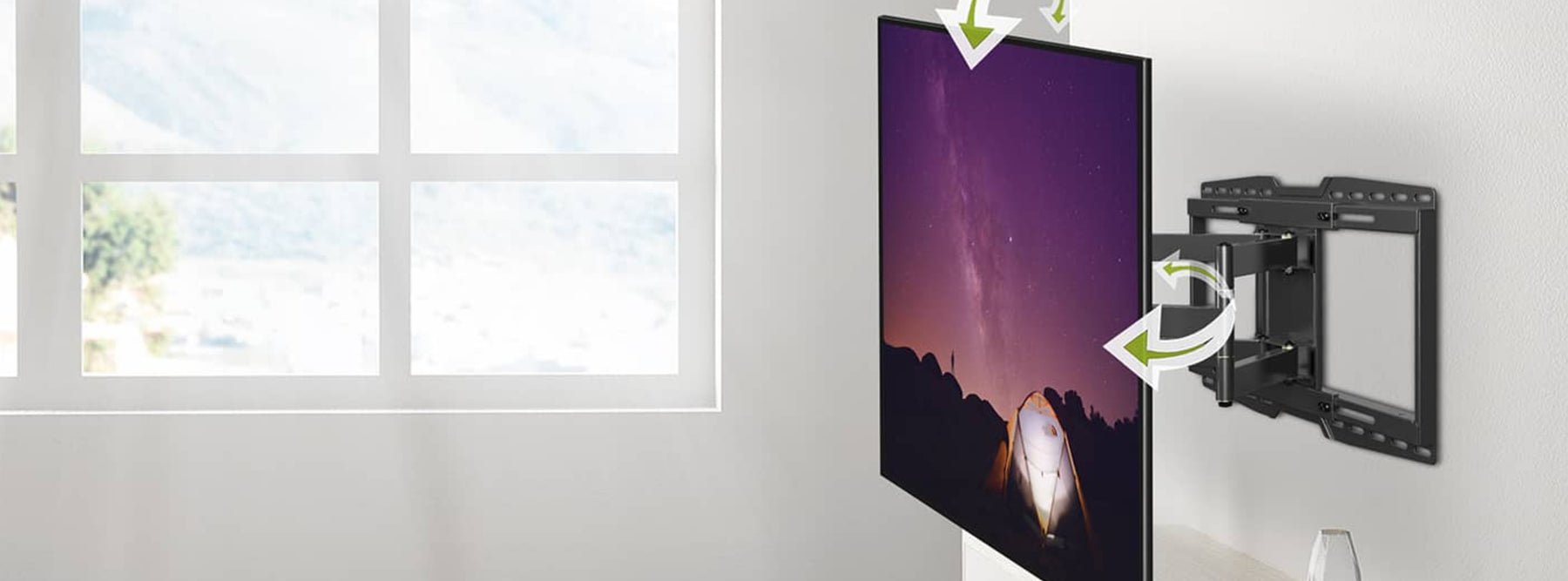
Understanding the Differences: Universal Fixed TV Wall Mounts and Fully Articulating TV Wall Mounts
In the world of home entertainment, the way we position our televisions can significantly impact our viewing experience. Two popular options that have emerged are the universal fixed TV wall mount and the fully articulating TV wall mount. Both have their unique features, benefits, and drawbacks. This article aims to help you understand the differences between these two types of mounts and guide you in choosing the right one for your needs.
Pros and Cons of Universal Fixed TV Wall Mounts
Fixed TV wall mounts, often referred to as flat or low-profile mounts, are a favored option among many homeowners. Their appeal lies in their straightforward design and sleek aesthetic. However, as with any product, universal fixed TV wall mounts come with their unique set of benefits and drawbacks.
On the upside, fixed TV wall mounts are the most basic type of mount, which makes them relatively easy to install. They typically require less hardware and fewer installation steps compared to other mount types. Fixed TV wall mounts secure the TV close to the wall, creating a clean, minimalist look. This not only enhances the aesthetic appeal of your room but also gives your TV the appearance of a wall painting. The design of fixed TV wall mounts, which holds the TV flat against the wall without any extending arms or tilting mechanisms, generally offers great stability and security. Moreover, fixed TV wall mounts are usually more affordable than tilting or articulating mounts, making them a cost-effective choice for those on a budget.
On the downside, the primary limitation of fixed TV wall mounts is their lack of adjustability. Once the TV is mounted, there’s no option to alter the viewing angle or tilt the screen to minimize glare. If you need to access the back of your TV for any reason, such as changing cables or dusting, a fixed mount can pose a challenge. You might need to detach the TV from the mount to access the ports. Additionally, with fixed TV wall mounts, the TV needs to be viewed head-on for the best picture quality. This can be a disadvantage in rooms with multiple viewing areas or in situations where viewers might be moving around.
Pros and Cons of Fully Articulating TV Wall Mounts
Fully articulating TV wall mounts, also referred to as full-motion mounts, are known for their high level of flexibility and adjustability. They are a preferred choice for many homeowners, but like any product, they come with their unique set of benefits and drawbacks. Here’s an overview of the pros and cons of fully articulating TV wall mounts.
On the upside, the primary advantage of fully articulating TV wall mounts is their adaptability. They provide the ability to tilt, swivel, and extend the TV away from the wall, allowing you to modify the viewing angle as required. This feature is especially beneficial in rooms with multiple viewing areas or varying light conditions. With the capacity to adjust the TV’s position, you can guarantee optimal viewing from any angle. This can greatly improve your viewing experience by reducing neck strain and glare. Fully articulating TV wall mounts have the ability to extend from the wall when in use and retract back when not in use, which can help conserve space in your room.
On the downside, fully articulating TV wall mounts are generally more complicated to install than fixed or tilting mounts. They often necessitate more steps and hardware, and it’s vital to ensure they are securely installed to bear the weight of the TV. Owing to their additional features and complexity, fully articulating TV wall mounts are typically more costly than other types of mounts. While they offer significant flexibility, fully articulating TV wall mounts may not deliver as sleek or minimalist a look as fixed mounts when the TV is retracted against the wall. The extending arm and extra hardware are often visible.
If you're looking for a cost-effective, simple solution and your viewing area is fixed, a universal fixed TV wall mount could be the perfect choice. It offers a sleek, unobtrusive look and is generally easier to install.
However, if flexibility is a priority, a fully articulating TV wall mount may be a better option. It allows you to adjust the TV's position for different viewing angles, which can significantly enhance your viewing experience in rooms with multiple viewing areas or changing light conditions.
In conclusion, both the universal fixed TV wall mount and the fully articulating TV wall mount have their unique advantages. Your choice between the two will depend on your specific needs, preferences, and the layout of your room. By understanding the differences between these two types of mounts, you can make an informed decision that will enhance your home entertainment experience.
Popular TV mount collections at USXSTAR:
Explore more TV mounts at USXSTAR:
Full Motion TV Wall Mount 82 Inch
